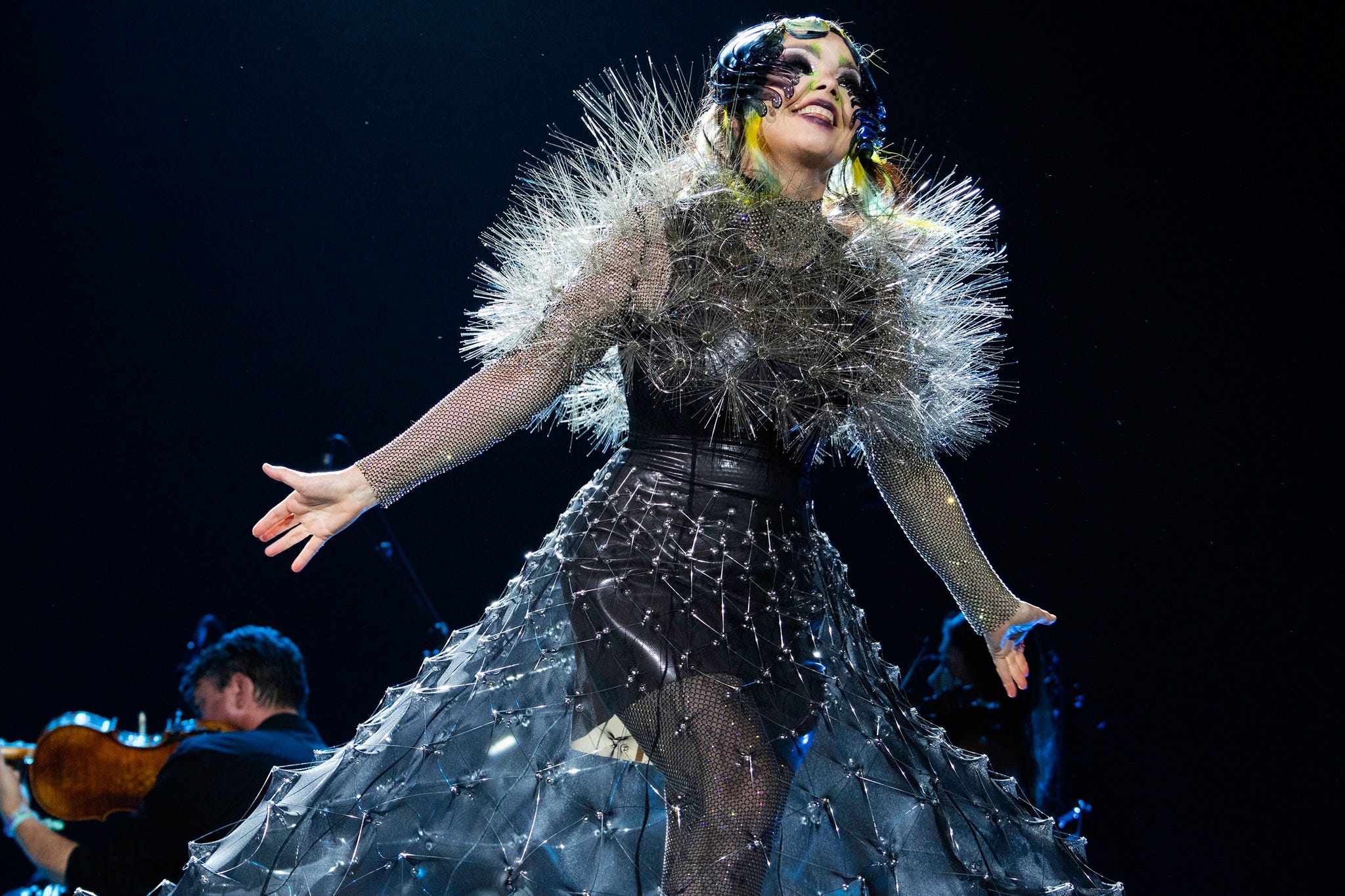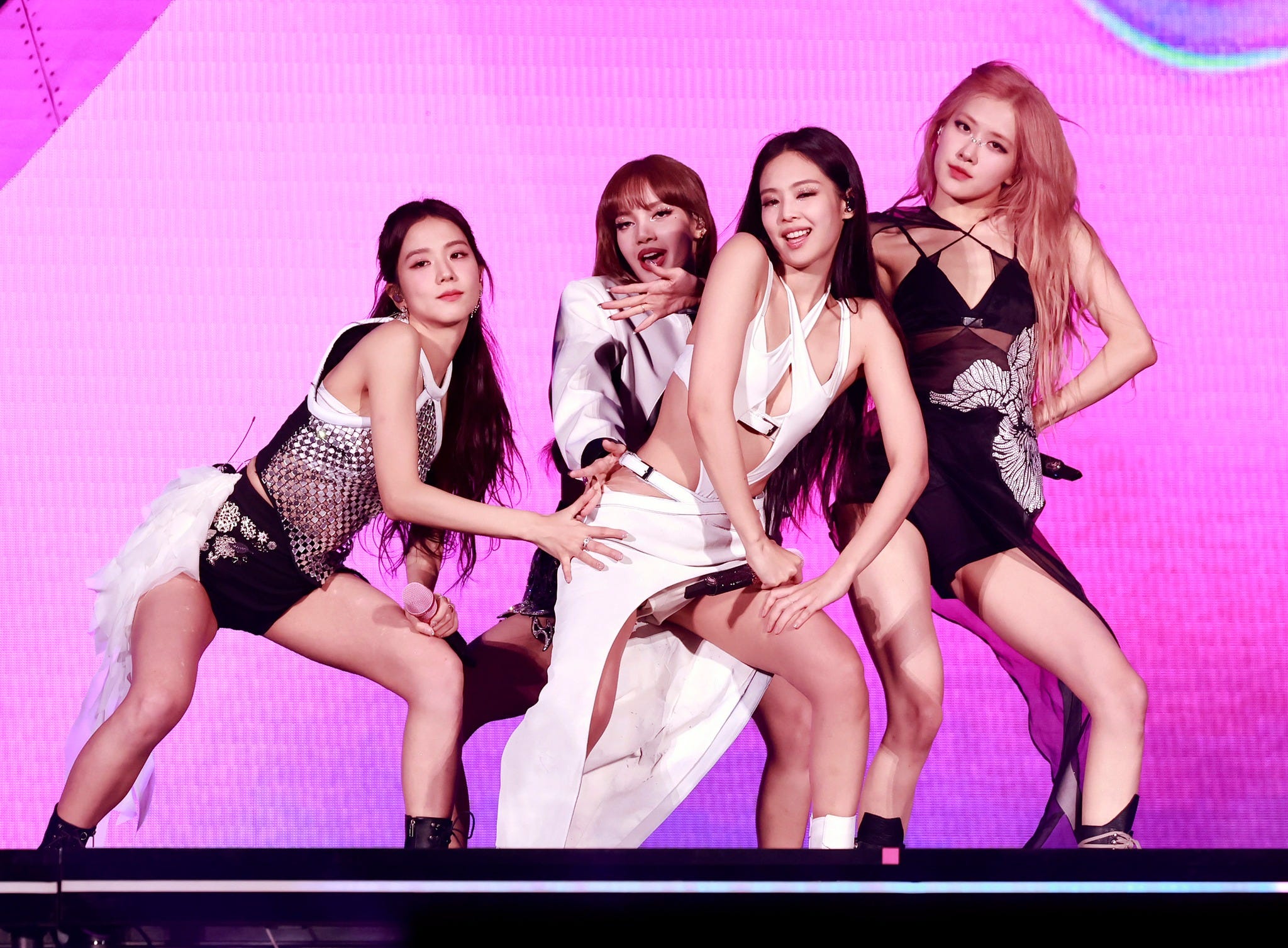OMG TBA
Coachella’s new breed of genre-blind, global headliners with a side of punk rebellion
Diatribe No. 160
Editor’s note: This is our first guest Diatribe. I’m thrilled to have music journalist Valerie Lee join me here.
There is perhaps no better place for a lively debate about all things Coachella, lineup, and (often subjective) opinions than with a group of friends piled into a Suburban on the way into the festival, stuck in traffic on Avenue 49. (If you know, you know.) A friend of mine, a seasoned music industry veteran with years of experience touring on the road with artists that range from Warped Tour bands to Top 40 pop stars, sat a row ahead of me in our car and wondered out loud, “Does Blackpink deserve to be a headliner?”
The many similar conversations I had before, during, and following the festival would indicate that he was not the only one wondering out loud why this year’s headliners felt different than years past. The largest names across the iconic Coachella lineup are some of the most hotly debated and fiercely negotiated billings across the music industry. Previously, headliner status has been awarded to only the most iconic and prolific rock and hip hop acts of the ages—names like The Cure, The Strokes, Nine Inch Nails, Red Hot Chili Peppers, Dr. Dre, and Snoop Dogg, Jay-Z, Kanye West, and occasionally, the universally-respected and genre blind performers like Björk, Gorillaz, and Prince.
Suddenly, the Superbowl halftime show didn’t feel like the pinnacle of performance for musicians. Beyoncé told us Coachella’s main stage could be that too.
While being a headliner has always been a coveted milestone of achievement, over recent years, the headliner position has become a moment of spectacle—an opportunity for artists to go above and beyond with performance, production, special guests, and even cinema, with the livestream offering a chance to cement their performance in music culture by reaching people around the world and across the Internet forever and beyond. There was no going back after 2018 when Beyoncé not only made history as the first Black female headliner of the festival and set the gold standard sky-high by demonstrating what being a Coachella headliner could mean. By pretty much all definitions, it was a perfect show—beautifully choreographed (not only on stage, but also to every camera angle for her eventual film release version of the performance), historically and culturally meaningful, and wildly entertaining from top to bottom. Suddenly, the Superbowl halftime show didn’t feel like the pinnacle of performance for musicians. Beyoncé told us Coachella’s main stage could be that too.
In the years that followed, it felt like both artists and the festival itself fell in line with what Beyoncé had established as the new gold standard, in a way creating a new category of headliner that one might define as the FOMO headliner—a moment guaranteed to be uniquely Coachella in its larger-than-life debut, whether its production or element of surprise. In 2019, despite not technically being an official headliner, Kanye broke all the stages and set times rules. He convinced Coachella to erect a man-made hill on the festival grounds for his Sunday Service performance. Though 2020 never came to life, its promised lineup reunited Rage Against the Machine and included a rare performance from Frank Ocean, who hadn’t performed since 2017. In 2022, when the festival did return, Kanye (billed as Ye) was initially announced as Sunday’s headliner and reportedly planned on a momentous performance that could have stood up against Beyoncé’s. (Allegedly, a full water feature on or around the stage was being discussed, and the reported impossibility of his production desires likely played a large part in his eventual pulling out of his headliner position.) Instead, he bowed out from the lineup, a first for the festival. After a brief moment of fan upset and a scramble, Coachella showed that it could roll with the star-sized punches and bring in The Weeknd, who ended up sharing the main stage slot with Swedish House Mafia for a genre crossover moment that felt as Coachella as it gets.
With the rising tide of headliners aiming to create a once-in-a-lifetime moment with their performance, Coachella steadied itself with accompanying headliners with a steadier reputation. Around 2017, the festival welcomed more pop-friendly names like Ariana Grande, Harry Styles, Lady Gaga, and Billie Eilish. Yet, through it all, longtime festival fans and devotees complained (loudly) about the changing tide of the bookings. “Where are all the bands?” “Coachella has sold out!”
So back to Blackpink and the question of their worthiness of being a headliner. It’s both a blessing and a curse of Coachella, a beloved tradition passed on from one generation of music lovers to the next. So many things define Coachella, yet each year, Coachella proves that it still defines things for everyone else. Lately, it’s the definition of what makes a worthy headliner.
Through its 23-year history, Coachella’s most tried and true unspoken commitment has been to create space for alternative, indie, and leftfield bookings.
In the question, there was no denying their fandom, star power, and their history at Coachella. There is no debate that Blackpink can sell tickets—and many of them—and bring Blinks (as their fandom is known) to the festival. Blackpink is known to put on a show—every minute is sharply choreographed with an onslaught of catchy dance moves, coordinated outfits, and solo breakouts for each of the four members. My friend’s question seemed to be less about their accolades, show prowess, or ticket-moving power and more an existential of belonging. Could an act with such a relatively short history command a headlining position against a legacy act like an AC/DC or a Guns N’ Roses?
Through its 23-year history, Coachella’s most consistent unspoken commitment has been to create space for alternative, indie, and leftfield bookings. Back in the earliest years of the festival, Coachella put its stamp on alternative dance acts of the time like The Chemical Brothers, Underworld, and Fatboy Slim, which some could argue ultimately led up to the first defining moment for the genre with Daft Punk’s performance in 2006.
Who else could resurrect Jai Paul for his debut performance after disappearing for years? This year’s lineup featured some incredible global firsts that went largely under the radar amongst bigger controversies around headlining performances (more on that below). Palestinian singer Elyanna became the first to sing and perform in Arabic at the festival. At the same time, Diljit Dosanjh was the first Punjabi artist on the lineup, bringing with him an entrancing display of his Indian background in song, dance, and fashion. Jackson Wang became the first solo Chinese artist to debut. Finally, South Africa’s Uncle Waffles brought amapiano (a jazzy, deep house style of South African house music) to the festival for the first time.
It was a natural continuation of a rising tide of global stars that Coachella has been cultivating over the past few years. In 2019, both Bad Bunny and Rosalía debuted at Coachella. Many considered them the official stamp of the arrival of Spanish-speaking Latin music on a global scale. That same year, Blackpink became the first K-Pop girl group to perform at the festival, which took place at the Sahara Tent to high acclaim.
During the final moments of their performance, Blackpink’s Rosé asked fellow bandmate Jisoo to say a few words. Then, she faced the audience, speaking to them directly in her native Korean—a first for the festival’s main stage.
All three acts returned this year, with two out of three becoming headliners (plenty, including myself, would argue that Rosalía put on a headliner-worthy performance this year) just four years later. On Friday night, addressing his crowd in a rare instance of English, Bad Bunny asked his audience a question. “What would you prefer? For me to speak in English or Spanish?” The crowd roared back, cheering for Spanish. On Saturday, during the final moments of their performance, Blackpink’s Rosé asked fellow bandmate Jisoo to say a few words. Then, she faced the audience, speaking to them directly in her native Korean—a first for the festival’s main stage.
So while their performances might not have had the mic drop effect of an artist like Beyoncé, this new wave of artists is carving out a new definition of what a headliner at Coachella can be. Not long ago, Blackpink arrived at the festival as a diplomat for K-Pop. Prior, a genre like K-Pop or Latin didn’t exist on the Western festival circuit. But, as the saying goes, with great power comes great responsibility. So Coachella has allowed a new type of artist to journey at the festival: to arrive, grow, and dominate as eventual headliners and stars in their own right.
The details of how [Frank Ocean’s] Sunday evening headlining performance fizzled can be chalked up to a musician—one who prefers the solitude and freedom of his artistry—forced to try on the costume of an entertainer.
Anyone keeping up with Coachella excitement over the past few weekends knows that the conversation didn’t end with the global superstars. Indeed, they were not the ones creating the most buzz regarding headlining. Inarguably, the biggest moment from the festival was Frank Ocean’s—or perhaps, his lack of a headliner-worthy moment that so many had hoped for him for his first performance in seven years. The details of how his Sunday evening headlining performance fizzled can be found across the Internet, but it can be chalked up to a musician—one who prefers the solitude and freedom of his artistry—forced to try on the costume of an entertainer. He was egregiously late, scrapped parts of his larger-than-life production at the eleventh hour, and the result was an intimate, half-hearted, and erratic performance. It didn’t fit, and it didn’t work.
Unsurprisingly, the festival announced that Frank would not be returning for a performance on Weekend 2—an unprecedented change for the festival since its expansion to two weekends in 2012. So three headliners had now turned into an opportunity for four . . . or maybe five?
Not to be understated and underappreciated, Blink-182 stepped up to the plate, graduating (in record timing) from a surprise add afternoon performance in the Sahara tent during Weekend 1 to an evening position on the main stage for Weekend 2. Many fans were appreciative, exclaiming that the band deserved this slot.
Coming back from a detrimental end to Weekend 1 that left throngs of fans deeply disappointed in Frank Ocean and the festival experience, it shouldn’t have come as a surprise that Coachella could not leave it at that. So upon the release of their daily schedules, a surprise headliner was announced, written in red font as “TBA” for Sunday at 10:25 PM.
The set itself was chaotic, messy, and euphoric. Skrillex stood on the table, hyping the crowd to a Missy Elliott chorus
Coachella’s attendees are made up of too many music fanatics and kids of the Internet to let the mysterious “TBA” go unknown for too long. It was mere minutes before it was given away by a series of Facetime screenshots, Instagram story videos, and photos of Four Tet wearing a perfectly meme-able t-shirt reading “OMG TBA” in neon green letters. The latest electronic super trio of Skrillex, Four Tet, and Fred Again… were coming to save the day.
The trio is a relatively new creation that came together publicly over the past year. A combination of three very different generations of electronic superstardom and production prowess, the Pangbourne House Mafia (as fans have lovingly dubbed them, the name being an ode to the city where the three first united to make music together and probably just a more straightforward thing to write out than Skrillex, Four Tet, and Fred Again… over and over) have already sold out three nights at London’s Electric Brixton and one at Madison Square Garden, which was preempted by a surprise pop-up that took over Times Square. All instances were announced in a renegade fashion, with each show being announced only days (or sometimes just one day) ahead of time. Each has played Coachella individually and, in all likelihood, was already high on the list of bookings for 2024.
Realistically, few (if any) artists could have pulled off what the trio did. To hit the sweet spot of being of the right caliber (relevant, exciting, and large enough to be appealing to a wide swath of music fans) is difficult enough. More urgently, in this instance, to be an artist willing to pull together a headlining Coachella set within a few days’ notice? Especially in a world of artists striving for their own Beyoncé moment on the main stage? Impossible.
So it begins to feel quite serendipitous.
Skrillex, Four Tet, and Fred Again… set up deep into the crowd in the middle of a circular stage (originally intended to be part of Frank Ocean’s set), distancing themselves from the traditional main stage and instead surrounding themselves from the crowd on all sides. The setup itself bare bones: a table, DJ equipment, and two black IKEA lamps.
The set itself was chaotic, messy, and euphoric. Skrillex stood on the table, hyping the crowd to a Missy Elliott chorus (a song from one of his two recent new albums). Fred, wearing a plain white t-shirt and grey sweatpants, was caught in a full belly laugh behind a gleeful Four Tet, who did absolutely whatever he wanted while in command of the decks. There was no pandering to the crowd or falling into expectations of what should be played. Instead, he restarted Skrillex’s “RATATAT” not once, not twice, but three times, sending the crowd into a boggled frenzy until he finally let the song go. Despite his reputation as an elite producer and often being grouped into the most high-brow electronic acts, his song choices for Coachella’s main stage felt closer to a college bar DJ. He played pop all-American classics like Taylor Swift’s “Love Story” and Miley Cyrus’ “Party in the USA” and tossed in several plays of the thundering “yee-DM” (a mix of country and EDM) dubstep track “Country Riddim.” (Whether intended or not, he’s quickly become the most meme-d one of the performance.)
Perhaps that magic of the moment explained why watching the three walk up to their momentous moments in casual sweats and the most humorous attitudes felt like another breakthrough for the festival. Alongside the new breed of headliners that welcome new genres, new faces, and new experiences, simultaneously, there also exists a particular category of a headliner who can create an experience so uniquely Coachella, so one-of-a-kind, and so rebellious against the festival’s pre-existing expectations and definitions of what should and shouldn’t be. It’s punk, with a new outfit on.
That’s what the festival has always been about. Through two decades of transformation, explosion, and transformation again, Coachella has always encouraged artists to be rebellious, do something different, and take a bet on what feels right versus what seems right. There’s no knowing what new festival moments and history Coachella will bring us in the coming years, but we can rest assured that it will be memorable, fun, and full of change for years.











"Punk with a new outfit on"... well said and how fitting for Goldenvoice and Coachella in a twist of fate. Great article Valerie!
Great article encapsulating the programming nuances associated with the ongoing evolution of Coachella. Golden Voice's ability to pull off such a victory with Fred/Skrillex/Fourtet in the face of the W1 Frank Ocean debacle truly underscore's Coachella's status as the GOAT of music festivals.